Metalheads everywhere know that there is only one true form of metal: Heavy Metal. But what about Death Metal? Some people say that Death Metal is a separate genre entirely, while others claim that it’s just a heavier subgenre of Heavy Metal. So which is it? In this blog post, we will take a look at the history, sound, and fans of both genres to see once and for all which one reigns supreme!
Table of Contents
What is Hard Rock?
To understand the difference between Heavy Metal and Death Metal, we first need to understand what Hard Rock is. Hard Rock is a style of rock music characterized by a heavy sound and aggressive lyrics. It developed in the late 1960s and early 1970s. Hard Rock bands often use distorted guitars and make extensive use of solos. Some of the most famous Hard Rock bands include Led Zeppelin, Deep Purple, and Aerosmith.
Hard Rock laid the foundation for both Heavy Metal and Death Metal. In the early 1970s, a new breed of Hard Rock bands began to emerge that would go on to pioneer Heavy Metal. Bands like Black Sabbath, Judas Priest, and Iron Maiden were among the first to establish Heavy Metal’s sound and style. Death Metal, on the other hand, did not emerge until the 1980s.
So what exactly is the difference between Heavy Metal and Death Metal? Let’s take a look at each genre in more detail. [1]
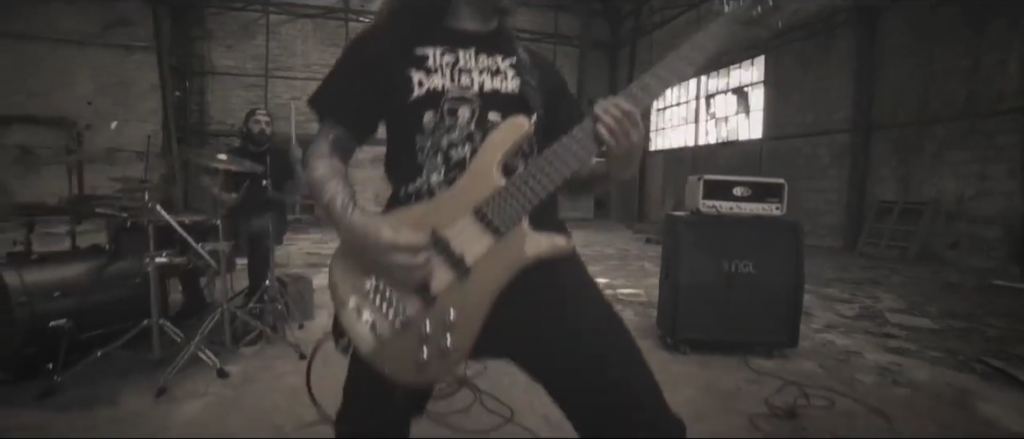
What is Heavy Metal?
The Heavy Metal genre is known for its loud, distorted sound and extended guitar solos. It developed in the late 1960s and early 1970s in the UK and US.
In 1970, four British rock bands released debut albums that defined early heavy metal. Led Zeppelin’s self-titled album (1969), Black Sabbath’s Paranoid (1970), Deep Purple’s In Rock (1970), and Iron Butterfly’s In-A-Gadda-Da-Vida (1968) all had a heavy, guitar-and-drums-centered sound, with lyrics about topics such as war (“War Pigs”), machinery and transportation (“In the Hall of the Mountain King”), and drugs and violence (“In-A-Gadda-Da-Vida”).
Paranoid, the second and most successful album from Black Sabbath, was the first to feature the now-standard heavy metal lineup of two electric guitars, bass guitar, and drums. Its massive sound and dark lyrics connected with a larger audience than that of its predecessors.
In the 1980s, glam metal bands such as Mötley Crüe and Poison became major forces in heavy metal. Glam metal bands were often visually distinguished by their use of platform shoes, tight denim jeans, spandex trousers, and a flashy wardrobe. This look was epitomized by singer Vince Neil’s clothing in the music video for Mötley Crüe’s song “Girls, Girls, Girls”. These bands emphasized an image of wild partying and excess, often associated with illegal drugs such as cocaine, heroin, and methamphetamine.
In the mid-1980s, thrash metal bands such as Metallica and Slayer rose to prominence on the strength of their live performances and their willingness to experiment with new sounds. Thrash metal’s fast tempos, instrumentals, and aggressive musicianship placed it at the forefront of the 1980s heavy metal scene. The genre’s lyrics often dealt with social issues such as war, poverty, addiction, and betrayal.
Today, heavy metal is once again a thriving genre of rock music. Newer bands such as Avenged Sevenfold and Trivium have been able to find success by blending elements of both metal and punk rock. And while some purists may argue that these bands are not true heavy metal, there is no denying the fact that they have brought the genre to a new generation of fans. [2]
What is Death Metal?
The term “death metal” refers to a type of heavy metal music that was created in the late 1980s and early 1990s. It is characterized by a fast tempo, low-tuned guitars, and guttural vocals. Death metal songs often deal with topics such as death, violence, war, and the occult.
The genre’s origins are typically traced back to two bands: Possessed and Death. Possessed’s 1984 debut album Seven Churches is often cited as the first death metal record, while Death’s 1985 debut Scream Bloody Gore is considered to be the genre’s defining release. These two albums helped to establish many of the genre’s trademark sounds, including fast tempos, growling vocals, and heavily distorted guitars.
In the early 1990s, death metal began to diversify, with bands such as Morbid Angel and Cannibal Corpse experimenting with new sounds and song structures. This led to the development of subgenres such as blackened death metal and deathcore. [3]
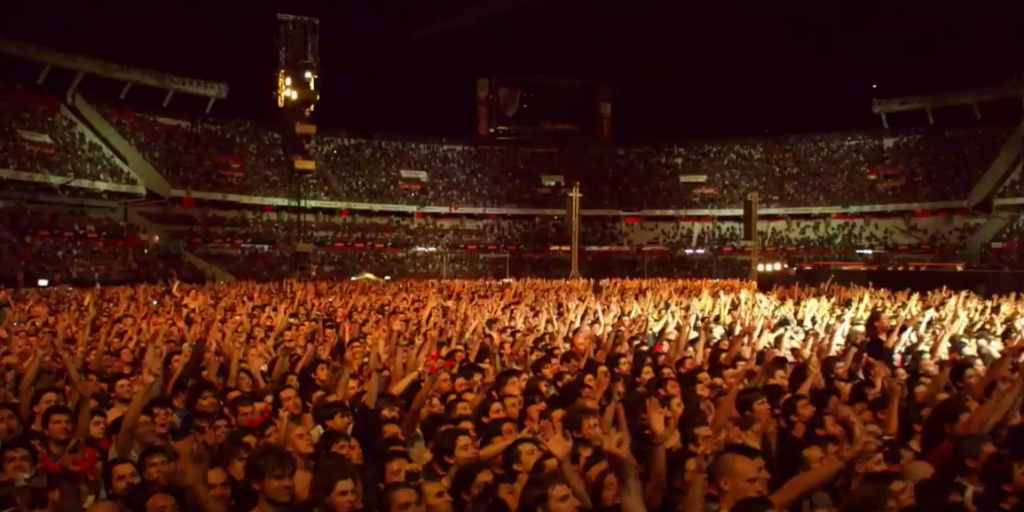
Differences
While heavy metal and death metal share many commonalities, there are a few key differences that set them apart. Here are some of the most notable distinctions:
- Tempo: Heavy metal songs are typically mid-paced or fast-paced, while death metal songs are usually played at a very fast tempo.
- Guitar sound: Heavy metal guitars are often highly distorted, but they typically have a cleaner sound than death metal guitars. Death metal guitarists often use drop tunings to create a heavier sound.
- Vocals: Heavy metal vocals can range from clean singing to guttural screams, but they are generally not as extreme as death metal vocals. Death Metal vocals are usually low and guttural, with some singers employing a “death growl” technique.
- Lyrics: Heavy metal lyrics can be about a wide range of topics, but they often deal with themes such as rebellion and hedonism. Death metal lyrics are usually dark and violent, often focusing on topics such as death, decay, and the occult.
Other Types of Metal Music
In addition to heavy metal and death metal, there are a number of other subgenres of metal music. Here are some of the most popular:
- Black metal: Black metal is a style of extreme music that emerged in the 1980s and is characterized by its quick tempos, extremely distorted guitars, and Satanic-sounding vocals. Satanism, evil, and death are all themes that may be found in black metal songs.
- Doom metal: A genre that emerged in the early 1980s, doom metal is characterized by its slow tempo, dark atmosphere, and heavy guitar sound. Doom metal lyrics often deal with despair, loneliness, and death.
- Folk metal: A melding of contemporary heavy metal music with the classic sound of traditional folk tunes. Folk metal artists frequently utilize traditional instruments like acoustic guitars and violins, as well as themes from mythology or history.
- Power metal: Power metal is a genre of music that takes heavy metal and progressive rock elements, infused with features such as fast tempos, multiple sections within songs, and lyrics based on fantasy themes.
- Thrash metal: Thrash metal is a subgenre of heavy metal music that emerged in the early 1980s and is characterized by its rapid tempo, aggressive guitar sound, and vociferous vocals. Lyrical themes in thrash metal include violence, war, and revolution.
Let’s take a look at them in detail.

Thrash Metal
Thrash metal is a genre of music that grew in popularity during the early 1980s. It typically has fast tempo, aggressive guitar sound, and shouted vocals. The lyrics often explore dark topics such as violence, war, and anarchy.
Resurgent in popularity, today’s thrash metal scene is anchored by new bands such as Municipal Waste, Havok, and Warbringer. If you’re a fan of fast-paced, aggressive music, then definitely give this genre a try!
Progressive Metal
Progressive metal is a type of music that containsaspects of heavy metal and progressive rock, as well as other genres like jazz. Progressive metal bands are recognized for employing complicated song structures, exotic time signatures, and lengthy instrumental solos.
The origins of progressive metal can be traced back to the 1970s with bands such as Yes, King Crimson, and Genesis. These bands were pioneers in the development of the progressive rock sound. In the 1980s and 1990s, a number of heavy metal bands began to experiment with progressive rock elements in their music. Bands such as Queensrÿche, Dream Theater, and Fates Warning helped to pioneer the sound of progressive metal.
If you’re into complex, difficult music, then progressive metal is right up your alley! Today, this genre is seeing a resurgence in popularity thanks to newer bands like Haken, Leprous, and The Contortionist.
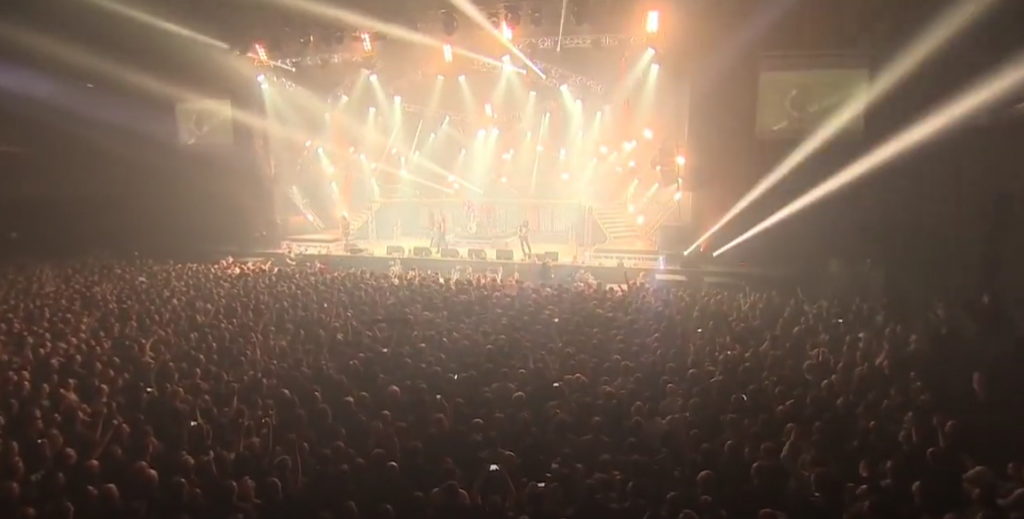
Power (Neoclassical) Metal
Power metal is a genre that borrows from both heavy metal and progressive rock. Often, power metal bands are characterized by their blistering tempos, expansive song structures, and lyrics inspired by fantasy themes.
Power metal began in the 1980s with Iron Maiden, Judas Priest, and Queen. These bands were innovators in creating the power metal genre . In subsequent decades , others followed suit, such as Dragonforce, Blind Guardian , and Rhapsody (of Fire).
Power metal is rapidly gaining popularity again thanks to new bands such as Sabaton, Powerwolf, and Leaves’ Eyes. If you’re a fan of music that is both fast-paced and epic, power metal should definitely be on your radar!
Groove Metal
Groove metal is a type of music that takes the power of heavy metal and combines it with the anarchy of hardcore punk. This genre is defined by low-tuned guitars, aggressive rhythms, and deep vocals. The lyrics usually explore dark themes such as death, fighting, and chaos.
Bands such as Pantera, Machine Head, and Sepultura were some of the first to use the term “groove metal” in its early 1990s. These artists helped to establish groove metal with their songs that combined elements of death metal and hardcore punk music. Lamb of God, Chimaira, and Devildriver are a few bands who began this trend in the late 1990s and 2000s.
Today, groove metal is experiencing a modest resurgence in popularity. Newer bands including Trivium, Killswitch Engage, and All That Remains are keeping the style alive and well. If you enjoy heavy, aggressive music, it’s definitely worth checking out!
Black Metal
Black metal songs are characterized by quickly played guitars, lyrics shouting about dark topics, and a generally heavy sound. These topics often include Satanism, death, and darkness.
If you like hard-hitting and quick music, black metal might be up your alley. Today, it’s making a comeback in the music scene with groups such as Watain, Behemoth, and 1349 at the forefront!
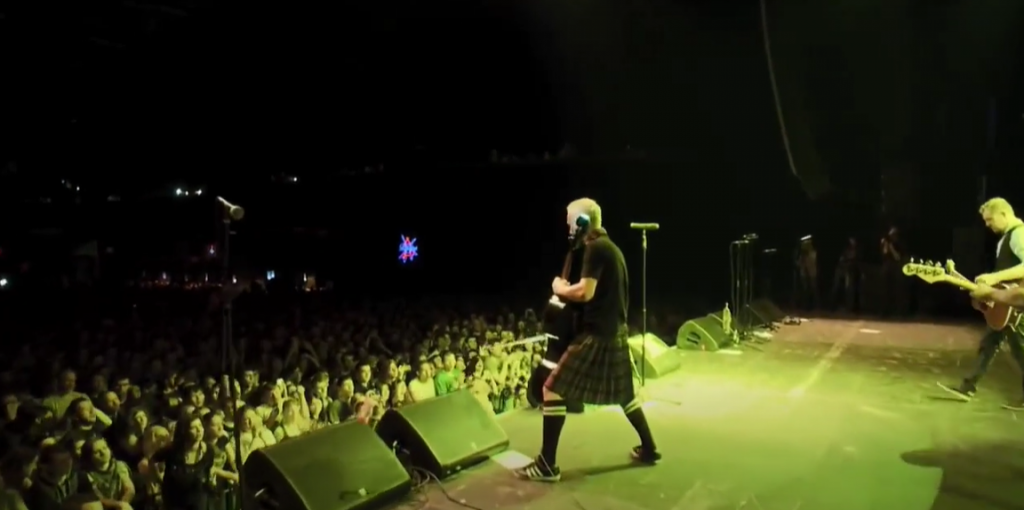
Nu Metal
Nu metal is a genre of music that combines elements of heavy metal and hip hop. Nu metal bands are typically characterized by their use of rap-style vocals, down-tuned guitars, and electronic beats. The lyrics often deal with dark topics such as violence, angst, and betrayal.
The origins of nu metal can be traced back to the early 1990s with bands such as Korn, Limp Bizkit, and Slipknot. These bands helped to pioneer the sound of nu metal by incorporating elements of hip hop into their music. In the late 1990s and 2000s, a number of other bands followed suit, including Papa Roach, Linkin Park, and Disturbed.
Today, nu metal is enjoying something of a resurgence in popularity. Newer bands such as Five Finger Death Punch, Of Mice & Men, and Issues are helping to keep the genre alive and well. If you’re a fan of heavy music with a hip-hop edge, then nu metal is definitely worth checking out!
Metalcore
Metalcore is a subgenre of heavy metal music that developed in the late 1990s. Metalcore is characterized by a combination of extreme metal and hardcore punk influences, with occasional elements of other genres.
Metalcore bands are often known for their use of slow breakdowns and intense passages that are conducive to mosh pits.
What separates metalcore from other subgenres of heavy metal is its focus on breakdowns and mosh parts. These are usually characterized by slow, heavy riffs played in unison by the guitars and bass, with the drums accentuating the downbeats.
Vocals in metalcore are typically screamed or shouted, with the occasional use of clean singing. Lyrics often center around topics such as mental illness, addiction, betrayal, and personal struggles.
Metalcore takes the best of both heavy metal and hardcore punk to create a unique sound that is aggressive and melodic with an emphasis on breakdowns. While some people may not consider it “true” metal, there’s no denying that metalcore has had a big impact on the heavy metal scene.
FAQ
What is the difference between metal and death metal?
Metal and death metal might share some similarities, but the primary distinction between the two genres is speed. Metal is normally performed at a moderate pace, whereas death metal zeroes in on being as fast as it can be. This difference in tempo results in two very distinct sounds:metal has more of a groove to it while death metal is more jarring and unpredictable.
Death metal vocals are often guttural or growled, whereas clean singing is more common in metal. The lyrics of death metal are generally grim and violent, frequently dealing with such themes as Satanism, murder, and bloodshed.
Death metal guitars are often tuned to a lower pitch than metal guitars, which contributes to the heavier sound death metal relies on. Another key difference is that while death metal uses blast beats and distortion, palm muting and power chords are more prevalent in regular metal music.
In short, metal and death metal are two distinct types of music. Metal tends to have a stronger focus on the beat, while death metal is more disorderly. Death metal also usually features coarse vocals and dark lyrics, as opposed to metal’s cleaner singing and brighter subject matter. Death metal is for those who want something heavy and aggressive, while metal that is a little more melodic might be more up your alley. Accessibility should not stop you from enjoying whichever you choose – just make sure you crank it up loud! [4]
What classifies death metal?
The goal of death metal is to create a sense of dread and despair through the usage of the attributes described above. Death metal is a subgenre of heavy metal that usually utilizes distorted guitars, tremolo picking, deep growling vocals, blast beat drumming, and complex song structures with many tempo changes.
Grindcore was first created in the early 1980s and became most popular in the late 1990s. Grindcore bands are frequently associated with intense violence and gore. Death, dying, slaughter, suicide, disease, pestilence, and apocalypse themes are some of the lyrical topics.
Death metal is characterized by its explicit lyrics, gory album covers, and fast tempo. Double-kick drumming is also a defining feature of the genre.
Although death metal is mostly classified as a subgenre of heavy metal, it contains several genres itself. A few of these are black death metal, melodic death metal, tech death metal, and brutal death metal. [5]
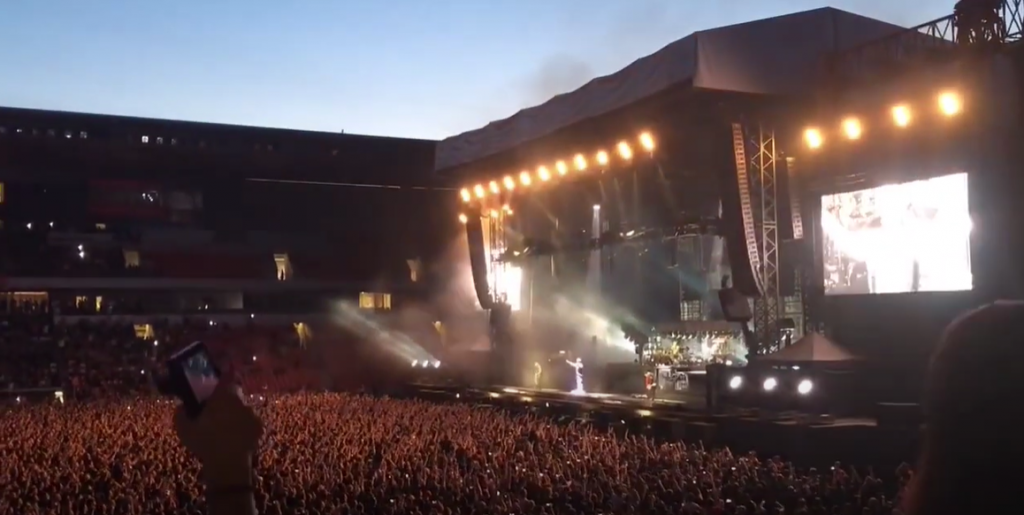
What’s the difference between heavy metal and metal?
The main distinction between heavy metal and metal rock is that the former is a subgenre of rock music while the latter pertains to a genre of it. Heavier, more distorted guitars as well as a faster tempo are hallmarks of heavy metal in contrast to other types of rock music. Also, various subgenres make up metal which includes black metal, death metal, and thrash metal among others.
Why is Slayer not death metal?
Slayer has been popularly described as one of the “Big Four” thrash metal bands, alongside Metallica, Megadeth, and Anthrax. While Slayer’s music integrates elements of black metal and death metal by various accounts, they are primarily considered a thrash metal band. One reason why Slayer is not classified as typical death metal is that they diverge from the look that most people imagine when they think of a death metal band. The lyrics of death metal bands are often dark and gruesome, with growling vocals and fast-paced guitar riffs. Slayer’s songs, on the other hand, are frequently based on themes such as Satanism and anti-religion. In addition, while Slayer does utilize growling voices, they are not nearly as prevalent as in other death metal groups.
Is Black Sabbath death metal?
Black Sabbath is not classified as a death metal group. They are considered pioneers of heavy metal, but their music isn’t as intense. Also, Black Sabbaths’ lyrics aren’t gory like most death metal bands. Their songs focus on topics such as mental illness and paranoia. [6]
Where is death metal most popular?
Although it is most popular in Scandinavia and the Netherlands, death metal also has a sizeable fanbase in countries such as the United States, Brazil, and Australia.
Useful Video: Black Metal vs. Death Metal with Warbringer
Conclusion
It’s always interesting to explore the differences between two similar styles of music. In this case, we looked at the difference between heavy metal and death metal. Both styles are loud and aggressive, but they differ in terms of tempo, lyrics, and overall sound. What do you think is the biggest difference between these two genres? Let us know in the comments!
References:
- https://www.masterclass.com/articles/hard-rock-music-guide
- https://www.britannica.com/art/heavy-metal-music
- https://www.masterclass.com/articles/death-metal-guide
- https://www.quora.com/What-is-the-difference-between-regular-metal-and-death-metal
- https://deathdoom.com/death-metal/
- https://faroutmagazine.co.uk/black-sabbath-hated-being-called-heavy-metal/


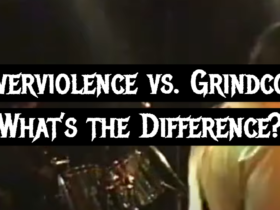
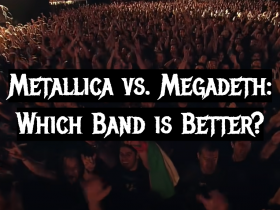
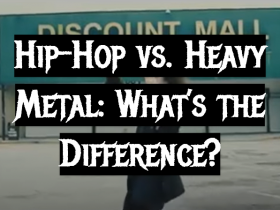
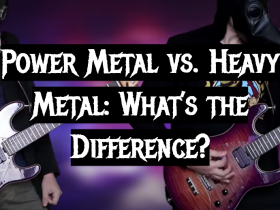
Leave a Reply